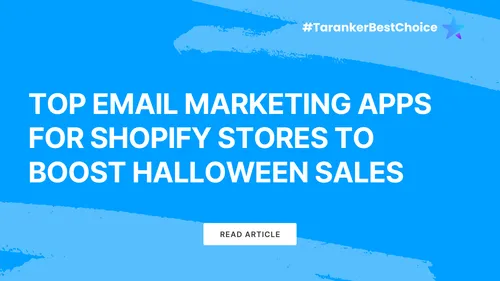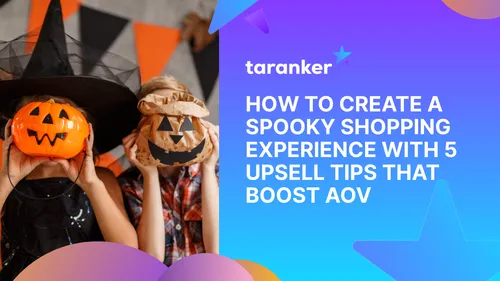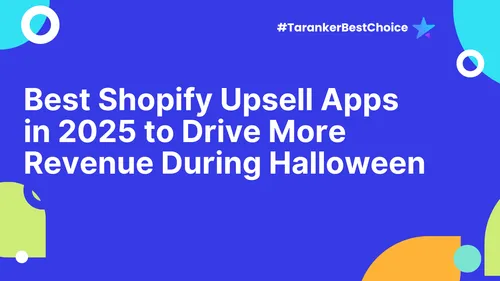As customer acquisition costs continue to climb and digital competition intensifies, eCommerce operators are under more pressure than ever to increase profitability without inflating marketing budgets. The most efficient path forward? Maximizing revenue from your existing customer base.
Studies consistently show that acquiring a new customer can cost 5 to 25 times more than retaining and upselling a current one. In this context, automated upsell and cross-sell strategies emerge not as optional enhancements - but as mission-critical revenue levers.
Modern, AI-powered recommendation engines now enable digital storefronts to deliver personalized, timely, and context-aware product suggestions - at scale, and across the full customer journey. The result is not only higher Average Order Value (AOV) and Customer Lifetime Value (CLV), but also a seamless experience that deepens brand loyalty.
Part I: Rethinking Upsell & Cross-Sell - From Conversion Tactics to Scalable Revenue Frameworks
In the early stages of digital commerce, upselling and cross-selling were often treated as discrete conversion tactics - deployed manually or via simplistic logic trees. These methods, while serviceable at small scale, were inherently static. They failed to account for context, behavior, or the multifaceted nature of customer intent.
In today’s highly dynamic eCommerce environment, that approach is no longer viable. Modern upsell and cross-sell strategies have evolved into modular, data-driven revenue systems - designed not only to increase Average Order Value (AOV) but to personalize the entire customer experience across multiple touchpoints.
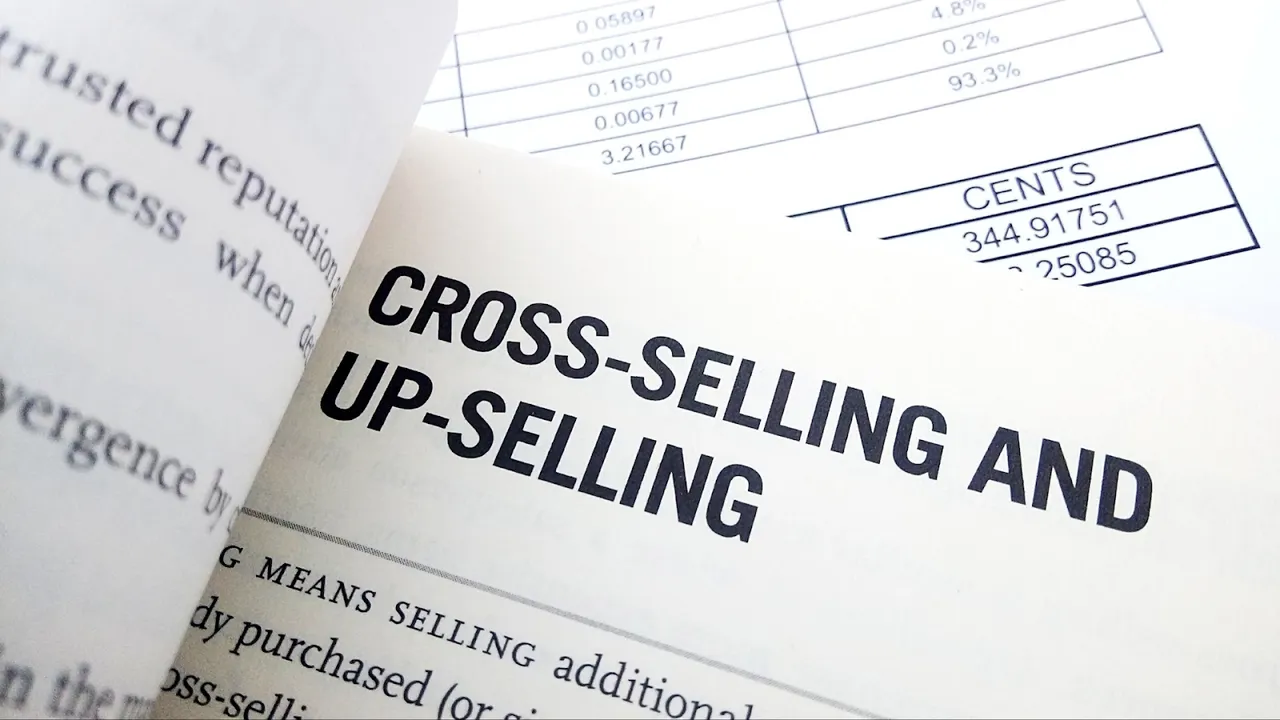
Before delving into the mechanics of automation, it is important to establish clear operational definitions:
-
Upselling refers to the practice of recommending a more advanced, feature-rich, or higher-margin variant of a product the customer is already considering. The objective is to enhance perceived value while aligning with the shopper’s original intent.
-
Cross-selling, on the other hand, involves offering complementary or adjacent products - items that logically enhance the utility, experience, or outcome of the primary product. Effective cross-sell strategies are based on contextual compatibility, not just catalog adjacency.
These strategies, when executed thoughtfully, do more than boost revenue. They create depth in product discovery, enrich the shopping journey, and reinforce brand perception as intuitive, helpful, and value-oriented.
What has fundamentally changed is the infrastructure behind these recommendations. Today’s leading eCommerce operators are no longer dependent on rule-based “if this, then that” logic. Instead, they employ:
-
Machine learning algorithms to detect behavioral patterns and affinities
-
Real-time user segmentation to dynamically tailor offers by micro-cohort
-
Natural language processing to analyze sentiment, intent, and product relevance
-
Predictive analytics to prioritize offers with the highest likelihood of conversion
These technologies enable context-aware personalization at scale, allowing merchants to serve recommendations that are not just relevant - but timely, persuasive, and brand-aligned.
Consider this benchmark: Amazon attributes over 35% of its total revenue to the effectiveness of its product recommendation systems. This is not the result of aggressive promotion - but of precise personalization rooted in behavioral insight.
Ultimately, upselling and cross-selling are no longer ancillary sales tactics. They represent a core architectural layer of any modern revenue strategy - an essential component of conversion optimization, customer experience design, and long-term retention.
Part II: 2025 Trends Redefining Upsell & Cross‑Sell Automation
The landscape of product recommendation has undergone a dramatic transformation - moving beyond conventional logic-based systems to adopt contextual intelligence and deep learning frameworks. In 2025, eCommerce leaders are no longer competing on catalog breadth or pricing alone. They’re differentiating on precision personalization, predictive automation, and real-time adaptability.

These are the key trends reshaping the future of upsell and cross-sell automation:
1. Generative AI & Dynamic Bundling
Traditional bundling strategies often rely on predefined product sets and manual curation - resulting in rigidity and missed conversion opportunities. In contrast, generative AI introduces a fluid, data-driven approach to bundle creation.
Modern recommendation systems, powered by transformer-based language and product modeling, can now automatically generate bundle combinations in real time, based on:
-
Historical purchase patterns
-
Active inventory constraints
-
Real-time session behavior
-
Customer preferences and segmentation
More significantly, these models allow for dynamic substitution - where out-of-stock or unavailable items are replaced intelligently with comparable alternatives, without disrupting the bundle logic or value proposition.
This results in higher conversion rates, stronger perceived personalization, and protection of AOV integrity across fluctuating operational conditions.
2. Sentiment-Based Product Mapping
While traditional recommendation systems focus on transactional signals, 2025 platforms increasingly incorporate emotional and psychological intent as core data layers.
Advanced AI models now ingest:
-
Customer reviews and feedback
-
Sentiment polarity from NLP (positive/negative/neutral)
-
Emotional drivers embedded in product language (e.g., “safe,” “durable,” “luxury,” “eco-friendly”)
Using this sentiment matrix, platforms can match customers with SKUs that resonate emotionally and semantically, not just functionally. The result: higher engagement, deeper affinity, and improved post-purchase satisfaction.
3. Visual AI Integration
Visual commerce is becoming an increasingly critical differentiator - particularly in verticals like apparel, beauty, home decor, and luxury retail.
Visual AI enables platforms to go beyond product tags or attributes by analyzing actual image data to determine:
-
Color harmony
-
Material consistency
-
Style alignment
-
Visual congruence with previously viewed or purchased products
This allows for aesthetically aligned upsell flows, where each recommendation feels like a curated extension of the shopper’s current taste - enhancing both brand perception and user experience.
4. Omnichannel Recommendation Deployment
In 2025, upsell and cross-sell strategies must span the entire customer journey, not just the point of purchase. The most effective platforms deploy context-aware, channel-native recommendations across:
-
Product detail pages
-
Cart and checkout stages
-
Add-to-cart confirmation popups
-
Post-purchase “thank you” pages
-
Transactional and lifecycle emails
-
SMS and push notification workflows
By maintaining recommendation continuity across these touchpoints, brands can increase total conversion velocity, while reinforcing relevance at each stage of the decision funnel.
5. Multi-Armed Bandit Optimization (MAB)
Traditional A/B testing - while foundational - has limitations in scalability and adaptability. MAB algorithms represent a next-generation approach that allocates exposure dynamically to high-performing variants based on live conversion data.
In practice, MAB testing enables platforms to:
-
Minimize opportunity cost from underperforming variants
-
Accelerate optimization cycles
-
Personalize recommendation experiences based on observed success metrics
This model reduces the guesswork in campaign testing and ensures that traffic is algorithmically routed toward the most effective offer, in near real-time.
Part III: Strategic Implementation Framework for Intelligent Upsell & Cross-Sell Automation
While AI-powered upsell and cross-sell capabilities offer significant potential, their success is determined not by the technology alone, but by the strategic frameworks that guide their deployment.

To execute automated revenue optimization with precision and scalability, leading eCommerce organizations must anchor their approach in five interdependent pillars:
1. Behavioral Segmentation at the Edge
True personalization begins with hypergranular customer segmentation, executed at the edge of user interaction.
Modern recommendation engines must move beyond static customer cohorts and instead leverage real-time behavioral indicators such as:
-
Current cart contents
-
Scroll depth and time-on-page
-
Browsing sequences and exit patterns
-
Purchase recency and frequency
-
Session-level engagement velocity
By ingesting and interpreting these signals in-session, systems can generate micro-segmented, intent-driven recommendations that resonate with immediate context - not just long-term profile data.
This capability not only boosts conversion probability, but also elevates customer perception by making each interaction feel purposeful and personalized.
2. Time-Sensitive Offers with Smart Event Triggers
Upsell success is highly dependent on timing and placement. One of the most effective techniques is to deploy event-based offers that respond to high-intent actions - e.g., adding an item to the cart, viewing a premium product variant, or pausing mid-checkout.
These moments, known as conversion inflection points, are optimal triggers for:
-
Limited-time offers
-
Exclusive upgrades or add-ons
-
Tiered bundles with perceived value incentives
When presented dynamically and in alignment with behavioral cues, such offers have been shown to increase conversion rates by up to 30% - especially when they invoke urgency, scarcity, or exclusivity.
3. Email & SMS-Driven Post-Purchase Cross-Sell Journeys
Post-purchase communication is one of the most underutilized, yet high-leverage stages in the upsell lifecycle.
Automated flows sent within 24 to 48 hours after the initial transaction - via email or SMS - can re-engage customers by:
-
Recommending complementary or enhancement products
-
Introducing product bundles based on their recent purchase
-
Offering loyalty-driven incentives for add-on purchases
This not only extends the order value but also reinforces brand ecosystem adoption, improving long-term retention and LTV.
To maximize effectiveness, messaging should be context-aware, concise, and delivered through the customer’s preferred channel - based on previous engagement behavior.
4. Brand-Aligned UX Consistency: Design, Language, and Placement
No matter how advanced the AI engine, a recommendation will fail to convert if it feels out of place.
Effective upsell and cross-sell systems must respect the native environment of the digital storefront, with:
-
Design consistency that seamlessly integrates into the site’s visual hierarchy
-
Language alignment that reflects the brand’s tone of voice and value messaging
-
Strategic placement that enhances the user journey rather than interrupting it
This alignment ensures that upsell flows are perceived not as intrusive sales tactics - but as helpful, well-timed suggestions that enrich the experience.
5. Real-Time Reporting and Continuous Optimization
Measurement is the cornerstone of optimization. Without precise performance data, even the most sophisticated systems will underperform over time.
A robust upsell/cross-sell infrastructure must track, in real time:
-
Average Order Value (AOV) uplift per campaign
-
Offer engagement and acceptance rates
-
Revenue attribution from bundles or post-purchase flows
-
Variant-level performance from Multi-Armed Bandit (MAB) testing
These analytics inform the iterative refinement of recommendation logic, product prioritization, and offer presentation.
Moreover, when integrated into a feedback loop with machine learning, this data allows your system to learn autonomously - delivering compounding gains in conversion efficiency over time.
Part IV: Why Zotasell - Engineering the Future of Intelligent Upsell & Cross-Sell
In a crowded martech landscape filled with fragmented tools and static plug-ins, Zotasell stands apart as a purpose-built, enterprise-grade platform designed to elevate upselling and cross-selling from mere tactics into a fully orchestrated revenue function.
Zotasell is not simply a recommendation widget - it is a vertically integrated, AI-powered optimization system that enables eCommerce brands to deliver personalized, data-rich, and brand-consistent selling experiences across the entire customer lifecycle.
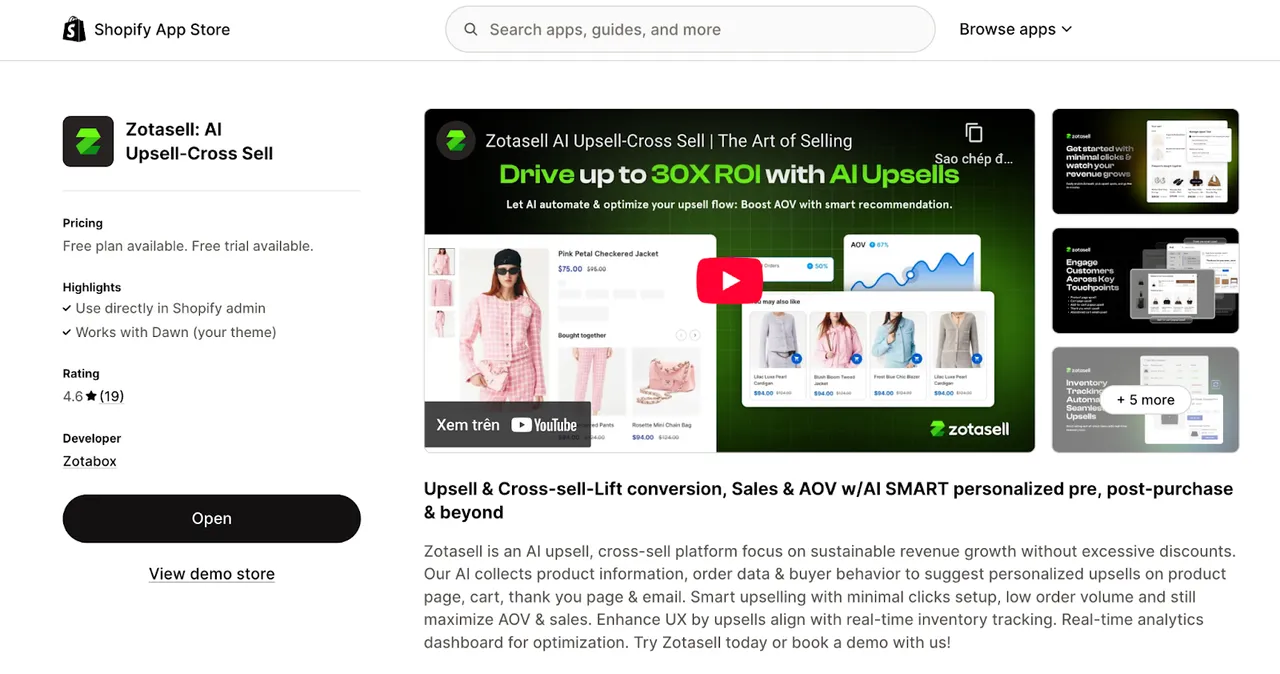
1. Visual AI-Powered Recommendations with Behavioral Intelligence
At the core of Zotasell lies a Visual AI engine that goes beyond textual product data. It analyzes:
-
User interaction patterns
-
Purchase histories
-
On-site behaviors
-
Visual attributes of products - such as color, texture, and design language
By integrating these layers, Zotasell generates contextually relevant product suggestions that feel intuitive and aligned - not only functionally, but aesthetically. This is particularly valuable in design-sensitive verticals such as fashion, cosmetics, and home decor, where visual congruence heavily influences purchase decisions.
2. Fully Customizable Deployment Across All Critical Touchpoints
Zotasell provides granular control over how and where recommendations are delivered, ensuring a seamless fit within your existing customer journey architecture.
Supported placements include:
-
Product Detail Pages (PDPs)
-
Shopping Cart interfaces
-
Add-to-Cart confirmation popups
-
Post-purchase “Thank You” screens
-
Lifecycle-triggered emails and SMS (e.g., confirmation, reactivation, retention)
Each touchpoint can be tailored in terms of layout, messaging, and business logic - enabling brands to balance conversion goals with UX and brand design fidelity.
3. Advanced Analytics Suite with KPI-Level Clarity
Visibility drives performance. Zotasell’s analytics framework offers real-time dashboards that go beyond vanity metrics, enabling commercial and product teams to track:
-
AOV uplift by campaign, segment, and channel
-
Bundle performance vs. individual SKUs
-
Engagement and conversion rates by widget and page placement
-
Attribution from post-purchase and omnichannel flows
-
Variant performance within A/B or MAB optimization scenarios
Armed with these insights, decision-makers can confidently allocate resources, optimize merchandising strategy, and quantify incremental revenue impact attributable to Zotasell’s interventions.
4. Self-Learning Recommendation Engines for Continuous Performance Scaling
Unlike static rules-based systems, Zotasell leverages machine learning models that improve with usage. As more customer interactions are captured, the platform continuously refines:
-
Product pairings
-
Timing logic
-
Presentation formats
-
Personalization thresholds
This ensures that the system becomes progressively more precise and performant, unlocking compound ROI gains with minimal manual intervention.
Afterthought
As digital commerce enters a phase of strategic maturity, the definition of success is evolving. It is no longer measured solely by conversion rates or order volumes, but by the ability to craft experiences that demonstrate empathy, contextual intelligence, and brand alignment. In this paradigm, upselling and cross-selling are not peripheral tactics—they are embedded components of a well-architected journey. When powered by real-time data and designed with restraint, they serve not to interrupt, but to enhance - to guide decisions rather than push transactions.
This is the future of commerce: purposeful, responsive, and experience-first. The brands that lead will not be those that recommend more, but those that recommend with meaning. In a saturated, choice-rich environment, the greatest advantage lies not in aggressive selling, but in elevated serving - where every interaction is an opportunity to demonstrate understanding, build trust, and create value beyond the transaction.
FAQs
1. What’s the difference between upselling and cross-selling?
Upselling promotes a premium version of the chosen product. Cross-selling introduces related or complementary items.
2. Is automation necessary for upsell/cross-sell?
For scale and effectiveness - yes. Manual efforts cannot match the speed, contextual relevance, or optimization capabilities of AI-driven systems.
